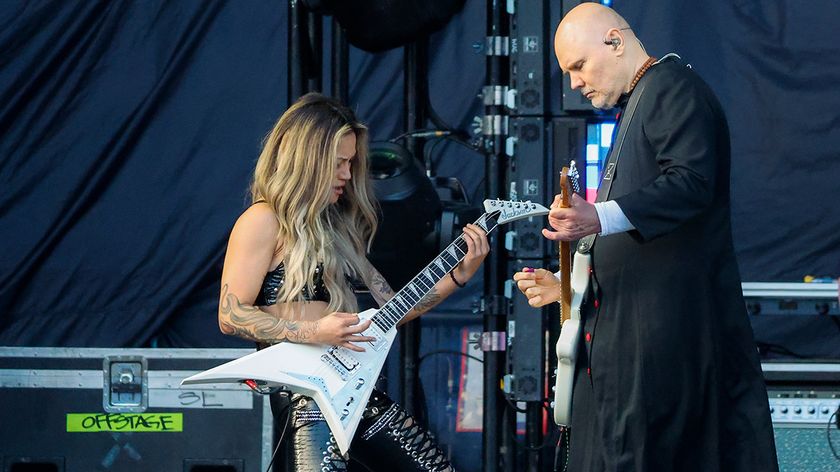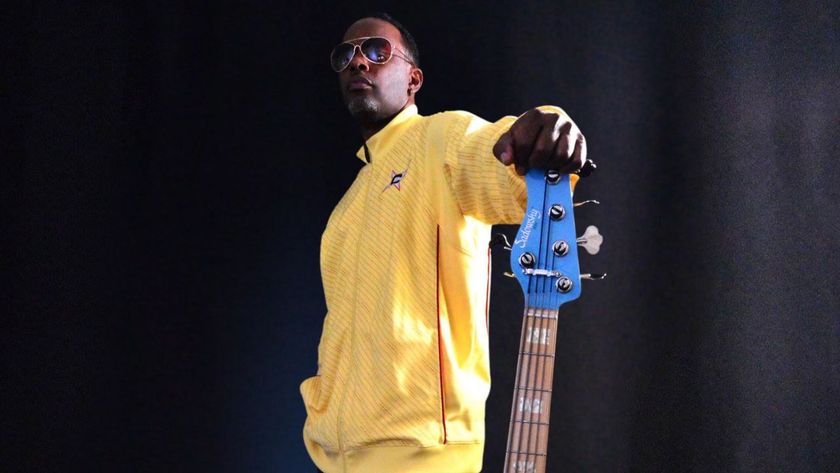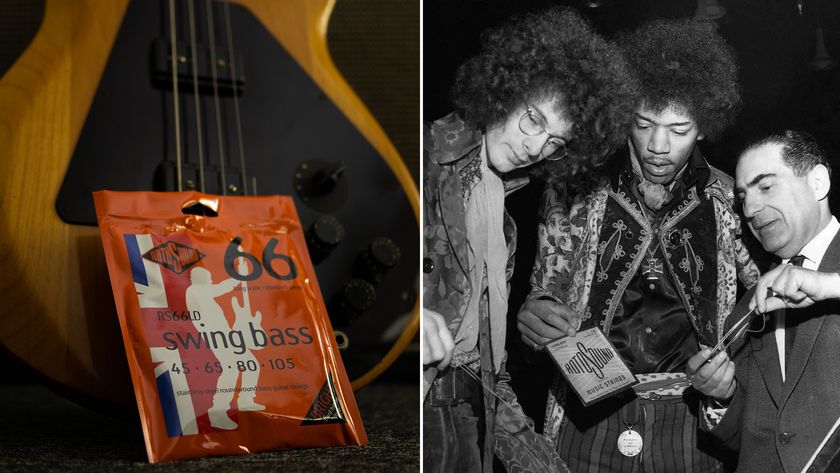Jim Davies: “You can’t just play whatever you want over dance music - the guitar has to fit in”
The former Prodigy guitarist talks getting the gig with the acclaimed dance-rock group, his latest solo album Headwars, and who really played the Firestarter riff
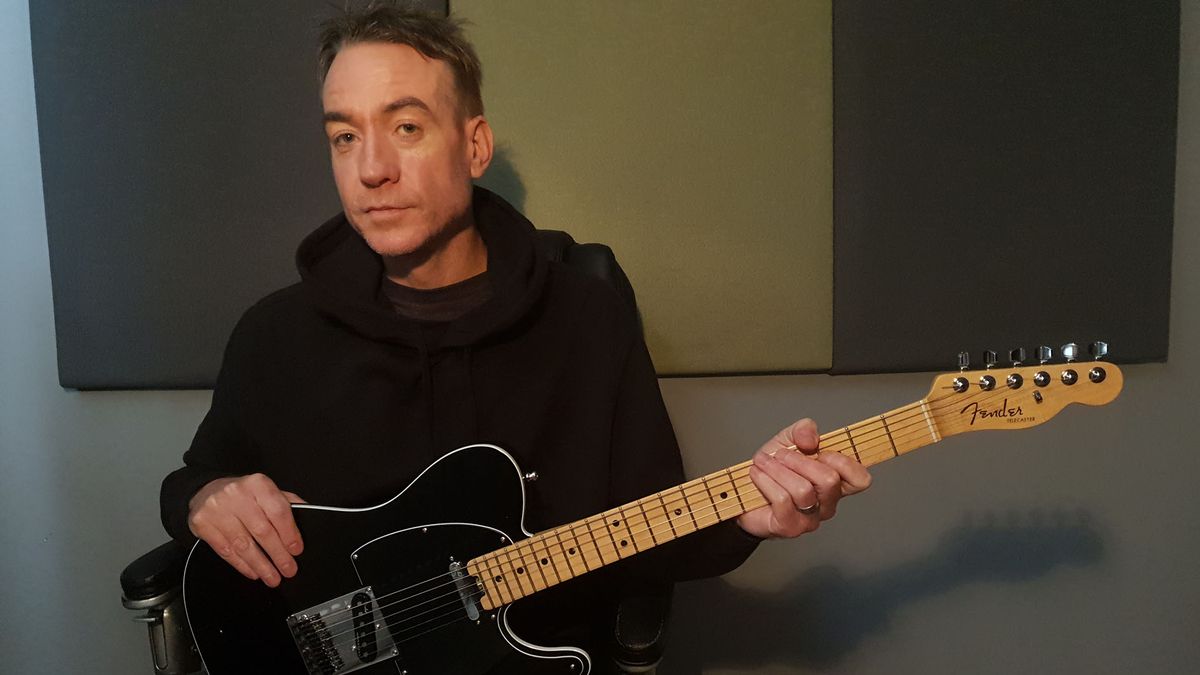
Even if you’ve never heard the name Jim Davies, you will almost certainly be aware of the English guitarist’s work. Having joined Essex crossover masters The Prodigy as their touring guitarist at the age of 21, he went on to perform on two of their biggest tracks - Firestarter and Breathe from 1997’s commercial breakthrough The Fat Of The Land.
As well as joining Pitchshifter the following year, and returning to The Prodigy’s touring line-up in 2002, he also performed and recorded in Keith Flint’s solo band - contributing to 2003’s Device #1 debut, which was sadly never released.
After almost a decade of working on production music, he returns this year with Headwars - a solo album which fuses angry metallic guitars with turbo-charged electronica. As he explains, the whole concept of combining different musical worlds came out of boredom following years of going down the traditional six-string approach…
“I heard all this electronic music and didn’t know how to use synths or program MIDI or whatever, so decided to recreate all of that through pedals,” he tells Guitar World. “There was no alien technology I had, it was all stuff anybody could go and buy. That helped me approach it from a different angle. I got absolutely fed up with playing guitar the regular way.
"I knew I was good but I didn’t sound any different to anyone else. The guy in the pub would probably sound better than me. So if I didn’t find electronic music, I would have ended up going to university to study archaeology or whatever…
Some of these tracks have up to 150 tracks running in Logic. It would be pretty difficult to play live - that’s just not something I’m interested in right now...
“For me, I usually find writing over a drum loop or bass loop and jam around that works best – trying to find sounds that fit in rather than get in the way. It’s not about ego or doing fast shred stuff. Steal what you can out of all genres and break the rules.
"This album brought a lot of creative freedom because I wasn’t thinking about playing it live. I like layering sound, some of these tracks have up to 150 tracks running in Logic. It would be pretty difficult to play live - that’s just not something I’m interested in right now…”
Get The Pick Newsletter
All the latest guitar news, interviews, lessons, reviews, deals and more, direct to your inbox!
Here Jim gives Guitar World a run through the gear on his latest recording and dispels the myths around his contributions to The Prodigy’s biggest hits…
What made you realize it was time to release music under your own name again?
“I spent the last 10 years writing production music for TV, it’s something I got into after all the band stuff and ended up really enjoying. There was a steep learning curve because beforehand all I did was play guitar. I couldn’t have cared less about production or compressors or EQs.
"All I wanted to know was when we’d be recording guitars and where we would be heading out later that night! So I had to learn how to produce and mix everything myself - writing thousands of tracks over the last decade for TV. I was happy doing production music and making a good living. But I got to a point where it felt like I was hitting a purple patch…"
How different was the experience operating on your own as opposed to fitting into a pre-existing group?
“In bands, I was just the guitarist and didn’t have control over the production or sound. So I wanted something to document where I am now in my musical career… because if I got hit by a bus tomorrow, looking up to the sky in my last dying moments, I’d probably think, ‘I could have done a bit better!’ This felt like the best stuff I’d ever done, to be honest.
"I sat down a year and a half ago with an empty screen and thought right let’s go. Usually for TV, there’s a brief. So I got think about what I wanted to do and I always come back to dark electronic music.
"What put me off was the idea of traipsing around record companies, having that whole soul destroying thing of them saying no! The production company I work for is very big and they have an artist side of things as well. So they said ‘Why don’t you put it out through us as an artist?’”
You’ve used Ibanez and Paul Reed Smith guitars in the past… is that still the case now?
When I was young, if you offered me a Telecaster I would have said, ‘No way, mate - that’s what Status Quo use!'
“When I was touring I had endorsement deals. I was with Ibanez for a long time and bought a few PRS guitars. I don’t have any endorsements these days, I just buy guitars for myself! The Tele I’ve got right now is a sign of age - you’ve got to worry when you start using those things (laughs)!
"When I was young, I was using all these spaceship-style Ibanezs and Mavericks and if you offered me a Telecaster I would have said, ‘No way, mate - that’s what Status Quo use!’ But this Tele is great, it’s a souped-up American model with noiseless pickups. It’s great at cutting through all the layers in my tracks. There’s one called Trigger Finger that I used that guitar for…”
Which, we have to say, includes some particularly nasty fuzz tones…
“Definitely - on that track I was messing around with a new pedal, the Electro-Harmonix Cock Fight, that a friend of mine had in the studio. I was playing and he was tweaking until I said, ‘Right, stop there! It’s like an envelope filter, I’ve always used wah-wahs, because I love those sweep-through filters.
"As for the other pedals, I always go back to the Digital Whammy for harmonizers and octave effect. The Line 6 FM4 is so squelchy, you can get it sounding like 303 synth stuff. I’ve always used the Cry Baby wah-wah.
"I think guitarists should mess up their sounds as much as they can through plug-ins. Guitar Rig is great, too! Some people wouldn’t use it, they might think they can only play through a mic’d up 1968 Marshall head… which is fine. But I like to find weird and interesting things that are different.”
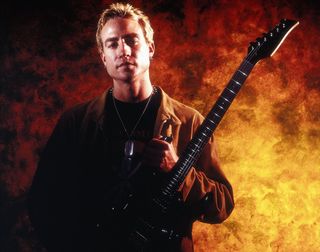
So did you end up using any amps at all?
“I actually used my Blackstar HT20 a lot. My studio setup is really basic, everything I need is in my computer. I don’t really use outboard gear or synths. I like coming straight out of the emulated output of that Blackstar head. I have my old Rocktron unit, which I dug out of the loft… it’s what I used on a lot of the Prodigy and Pitchshifter stuff and amazing it still works, though it’s just about hanging in there. It has all my old settings on it.
"Guitar-wise I’m not fussy. It doesn’t have to be a certain wood or set of strings. It doesn’t really bother me that much. I’m not really a purist or guitarist’s guitarist. That said, I really love the Blackstar stuff. I’ve known their artist rep, Joel Richardson, for a long time.
"I used to be with Marshall years ago and he gave me a shout early on when he was starting something new, asking if I was interested and the answer was yes. The HT20 is brilliant, you can crank it or play quietly and still get a good sound… I couldn’t do that with an old Marshall in the house. It just wouldn’t work.”
Now You Know is one of the more electronic tracks with hardly any guitars at all…
“Mixing it up was the whole idea. Depeche Mode are one of my favorite bands ever, so I can’t help but be influenced by them. And same with trip-hop, I like Massive Attack and stuff like that. I don’t see this as a solo guitarist’s album. Not every song has a lot of guitars on it, so Now You Know ended up quite laid back and sparse. I like a lot of the glitchy stuff.
"On the other hand, there’s a track with my mate Jason Bowld from Bullet For My Valentine called Caged, which is like a four-piece rock band track. There are no electronics in that at all. I love bands like Deftones and that side of things too… so it was a wide net. I didn’t want to make an album of 12 tracks that were the same. That would be boring.”
According to old interviews, you got your big break in The Prodigy by helping them load in some speakers and giving them a tape after the set…
I legged it home and did a one-take recording of me playing over Jilted. Within a couple of weeks I was playing live with them!
“Yeah, that was a weird time. Looking back now, it was a bit of a double-edged sword. I was working at the university and a big fan of the Jilted album. I lived quite locally in Essex to where the band came from. So I saw they were playing and knew I had to go.
"I managed to blag myself in, helping load in some speakers and got talking to their roadie asking where the guitar player was and he said they’d tried but it didn’t really work. I legged it home and did a one-take recording of me playing over Jilted. I managed to say hello backstage and didn’t expect anything from it. Within a couple of weeks I was playing live with them!”
That must have been quite a shock, to say the least…
“Looking back now, I wasn’t ready at all for that. I was 21 years old and had never done any proper gigs, nothing like the size of the venues I was suddenly propelled into. It was a weird time. Looking back, I wasn’t clued up at all… I was just a fanboy thinking, ‘Wow, I’m playing Brixton Academy with my favorite band next week!’
"It was a strange time but opened up a lot of doors for me. If that hadn’t happened, I probably wouldn’t be doing music now. So there were a lot of plusses and negatives.
"Electronic and rock were just coming together at that point. It was an exciting time and hugely inspiring to me. Dance music is always changing. There’s always a new sub-genre coming up. If you can find a way to put guitar in it, even if it’s not all about the guitar, great. I don’t see myself as a guitarist these days, I feel like I’m more of a producer.”
The intro to Firestarter is often credited as a sample from The Breeders, but we’ve also heard conflicting reports that it was recorded in the studio…
“That’s really interesting you say that, because I actually played that intro riff. It’s something that makes me laugh. Just a couple of days ago I clicked online and saw a list of the Top 50 riffs of all-time. Firestarter was on there and when I clicked on it, I saw it was described as a sample from The Breeders.
"I thought, ‘Really… after all this time?!’ That Breeders sample was the high-pitched whine that goes through the verse. I did the intro riff. There are guitarists out there who claim they played on Fat of the Land when they didn’t… it was me. It’s all there on the inlay. I was very privileged to have played on those tracks.
"I don’t really feel like I wasn’t credited or anything like that. I’ve done a lot of other stuff and I don’t feel like I’m defined by those big Prodigy tracks. Some people have their 15 minutes and try to live off that forever. That didn’t really happen with me because most people don’t really know what I did on those tracks.”
And on Breathe, is that you doing the glassy-sounding riff in the breakdown?
“My parts for Breathe came out of jamming in the studio. That middle section was something I messed around with in a strange tuning. Glassy is the perfect word, I was coming straight out of a unit. No warm power amps or cabinets. It was pretty nasty, to be honest.
"It would have been on an old Ibanez RG550, because I was really into those at the time. It got sampled and mixed into the song. When I used to do these little sessions, I’d take my little Rocktron preamp unit and come straight out of the back of it. That’s partly why it sounds so harsh and cuts through.
"There was so much sub-bass on those songs and it just so happens that a DI out and loads of effects made for a really cutting sound. It was more of a mistake than anything else.”
A year later, you joined Pitchshifter for their www.pitchshifter.com release…
“That was quite similar with how I got playing with The Prodigy. I was a huge fan of Pitchshifter and had been listening to Infotainment a lot because I just loved that crossover sound. When The Prodigy got another guitarist in, I went down to a Pitchshifter gig as a fan and got talking to them.
"They gave me a four-track demo with Please Sir, Microwaved and a couple of other tracks. So I did the same thing again - went home, played over it and added some extra lead stuff and sent it back. They asked me to come and play on the album. I remember thinking no one was doing crossover as well as them - the programming was amazing and they really understood electronic music… they weren’t just a rock band pretending to get it.
"So I went up to the studio, only supposed to play on that one track, but ended up staying for a few weeks on Johnny Carter’s sofa and playing on five or six tracks. They didn’t know how they were going to play it live because I was all over it, so then offered me the job!
"I wouldn’t give myself credit for writing any of that stuff but I did sprinkle a lot of color on from a guitar point of view, all these weird sounds I’d been dying to use for ages. Then I ended up co-writing the next few albums and EPs with John. They were a big part of my musical journey.”
What tips can you offer guitarists hoping to cross over into electronica?
I picked up my wah technique from Dimebag Darrell, who always had his wah set at a point to cut through - really high-pitched
“I got to a point where I’d spent hours doing my Steve Vai workouts and Paul Gilbert string skipping exercises and I got quite good… but then I hit a wall and realized there were so many people out there doing that and doing it better than me. The turning point was hearing electronic music. That totally changed how I played.
"You can’t just play whatever you want over dance music, putting things in just to show off or whatever. It has to fit in. For me, it always comes down to a catchy melody. A lot of my lead sounds are harsh. I use the wah-wah a lot. I learned that from Dimebag Darrell, who always had his wah set at a point to cut through - really high-pitched.
"It’s important to open your mind to other styles. If you only listen to rock stuff, then you’ll only sound like a rock guitarist. I respect guitarists who have their own sound, because so many of us sound the same.
"You can hear it’s Jimi Hendrix or Tom Morello within 10 seconds. That’s the most important thing to me. The intro to Trigger Finger is a good example… I found the sound and then decided to build the track around that. I knew it was going to work out.”
Finally, any parting tips for all the aspiring session players out there?
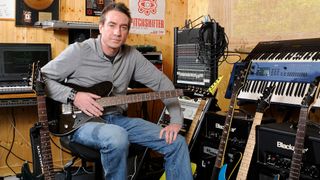
“It’s all about word of mouth when it comes to session work. You have to be on people’s radar - that’s how I landed my gigs. I was so young I didn't care. I didn’t overthink it. That’s how I did a lot of session work for DJs and dance producers. People knew I was the guy for electronic stuff.
"Now when people ask me if there’s a website to sign up to or whatever, I don’t want to piss on their bonfire by saying it doesn’t really work like that. No producer goes onto www.guitars4u.com to find their player. It’s more like Steve knows a bloke called Dave who knows a bloke called Jim. You have to get in people’s faces and be a bit cheeky to get yourself out there. That was the best way and still is, I think…”
Amit has been writing for titles like Total Guitar, MusicRadar and Guitar World for over a decade and counts Richie Kotzen, Guthrie Govan and Jeff Beck among his primary influences as a guitar player. He's worked for magazines like Kerrang!, Metal Hammer, Classic Rock, Prog, Record Collector, Planet Rock, Rhythm and Bass Player, as well as newspapers like Metro and The Independent, interviewing everyone from Ozzy Osbourne and Lemmy to Slash and Jimmy Page, and once even traded solos with a member of Slayer on a track released internationally. As a session guitarist, he's played alongside members of Judas Priest and Uriah Heep in London ensemble Metalworks, as well as handled lead guitars for legends like Glen Matlock (Sex Pistols, The Faces) and Stu Hamm (Steve Vai, Joe Satriani, G3).
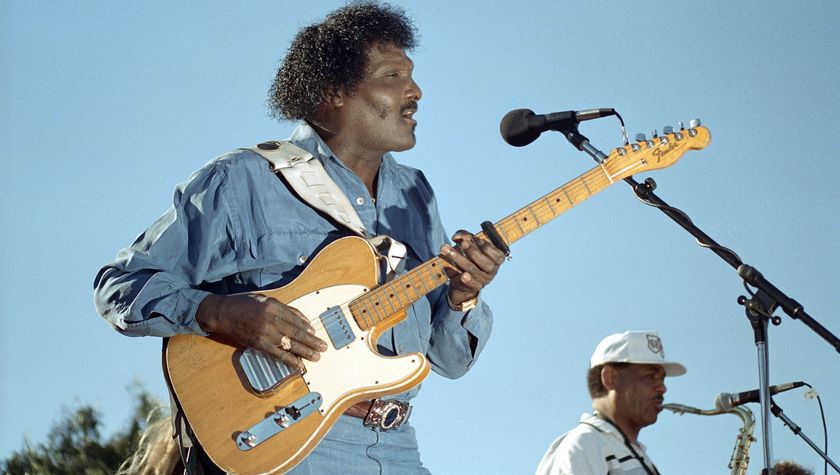
“Freddie King would ask me why I never tried using thumbpicks – I just couldn't play with one”: He took Jimi Hendrix's place in Little Richard's band, was idolized by Stevie Ray Vaughan, and is one of the most overlooked Telecaster slingers of all time
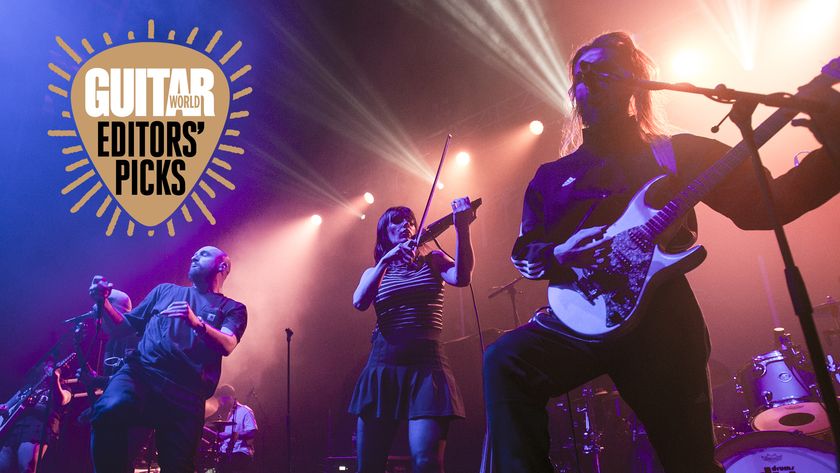
“If any song can unite all generations of rock guitar fans, this is it”: March 2025 Guitar World Editors' Picks

